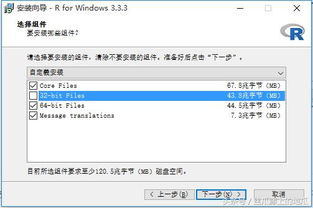在Java中,你能够运用多种办法来下载文件。以下是几种常见的办法:
1. 运用`java.net.URL`和`java.io.InputStream`:```javaimport java.io.InputStream;import java.io.OutputStream;import java.net.URL;import java.nio.file.Files;import java.nio.file.Path;import java.nio.file.StandardOpenOption;
public class DownloadFile { public static void downloadFile throws Exception { URL url = new URL; try qwe2 { Path path = new java.io.File.toPath; Files.copy; } }
public static void main argsqwe2 { String fileURL = http://example.com/file.zip; String saveDir = /path/to/save/file.zip; try { downloadFile; System.out.println; } catch { e.printStackTrace; } }}```
2. 运用`java.net.HttpURLConnection`:```javaimport java.io.BufferedInputStream;import java.io.FileOutputStream;import java.io.InputStream;import java.io.OutputStream;import java.net.HttpURLConnection;import java.net.URL;
public class DownloadFile { public static void downloadFile throws Exception { URL url = new URL; HttpURLConnection httpConn = url.openConnection; int responseCode = httpConn.getResponseCode;
// check HTTP response code first if { String fileName = ; String disposition = httpConn.getHeaderField;
if { int index = disposition.indexOf; if { fileName = disposition.substring 1qwe2; } } else { // extract file name from URL fileName = fileURL.substring 1qwe2; }
// opens input stream from the HTTP connection InputStream inputStream = httpConn.getInputStream; String saveFilePath = saveDir File.separator fileName;
// opens an output stream to save into file OutputStream outputStream = new FileOutputStream;
int bytesRead; byte buffer = new byte; while qwe2 != 1qwe2 { outputStream.write; }
outputStream.close; inputStream.close;
System.out.println; } else { System.out.println; } httpConn.disconnect; }
public static void main argsqwe2 { String fileURL = http://example.com/file.zip; String saveDir = /path/to/save/; try { downloadFile; } catch { e.printStackTrace; } }}```
3. 运用第三方库,如Apache HttpClient:```javaimport org.apache.http.HttpEntity;import org.apache.http.client.methods.CloseableHttpResponse;import org.apache.http.client.methods.HttpGet;import org.apache.http.impl.client.CloseableHttpClient;import org.apache.http.impl.client.HttpClients;import org.apache.http.util.EntityUtils;
import java.io.FileOutputStream;import java.io.IOException;import java.io.InputStream;import java.io.OutputStream;
public class DownloadFile { public static void downloadFile throws IOException { CloseableHttpClient httpClient = HttpClients.createDefault; HttpGet httpGet = new HttpGet; CloseableHttpResponse response = httpClient.execute; HttpEntity entity = response.getEntity; if { try ; OutputStream outputStream = new FileOutputStreamqwe2 { byte buffer = new byte; int bytesRead; while qwe2 != 1qwe2 { outputStream.write; } } EntityUtils.consume; } response.close; httpClient.close; System.out.println; }
public static void main argsqwe2 { String fileURL = http://example.com/file.zip; String saveDir = /path/to/save/file.zip; try { downloadFile; } catch { e.printStackTrace; } }}```
以上代码示例供给了不同的办法来下载文件。你能够依据你的具体需求挑选合适的办法。请保证在运转代码之前,现已正确装备了文件途径,而且网络连接正常。
Java环境下完成文件下载的具体教程

在Java开发中,文件下载是一个常见的功用。无论是Web运用仍是桌面运用程序,文件下载都是与用户交互的重要部分。本文将具体介绍如安在Java环境下完成文件下载,包含从服务器获取文件流、设置呼应头以及处理反常等。
一、准备工作

在开端编写代码之前,咱们需求保证以下几点:
Java开发环境现已搭建好。
有权限拜访需求下载的文件。
了解HTTP协议的基本知识。
二、获取文件流
在Java中,咱们能够运用`HttpURLConnection`类来获取文件流。以下是一个简略的示例代码,展现怎么获取文件流:
```java
import java.io.InputStream;
import java.net.HttpURLConnection;
import java.net.URL;
public class FileDownload {
public static void main(String[] args) {
try {
URL url = new URL(\









